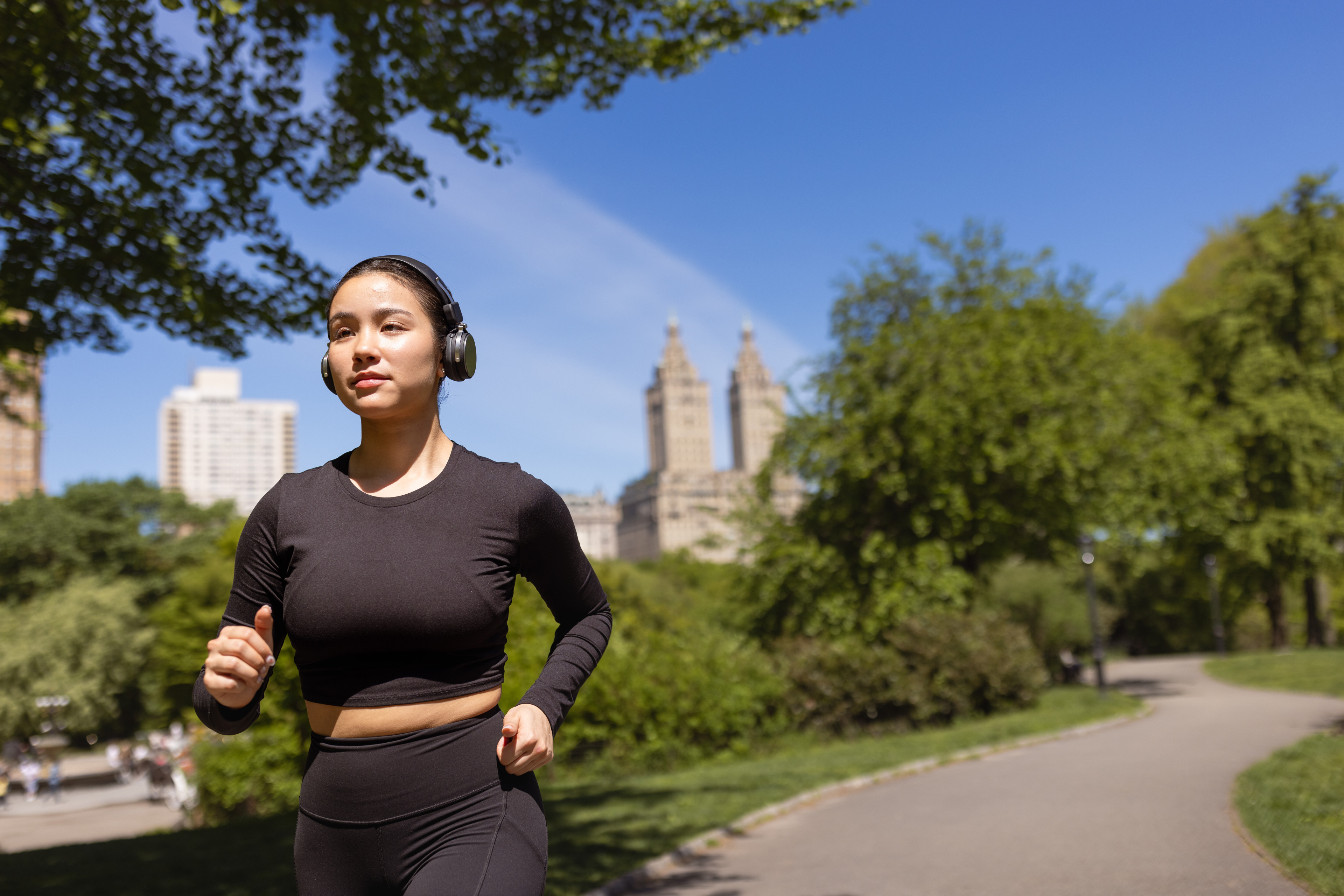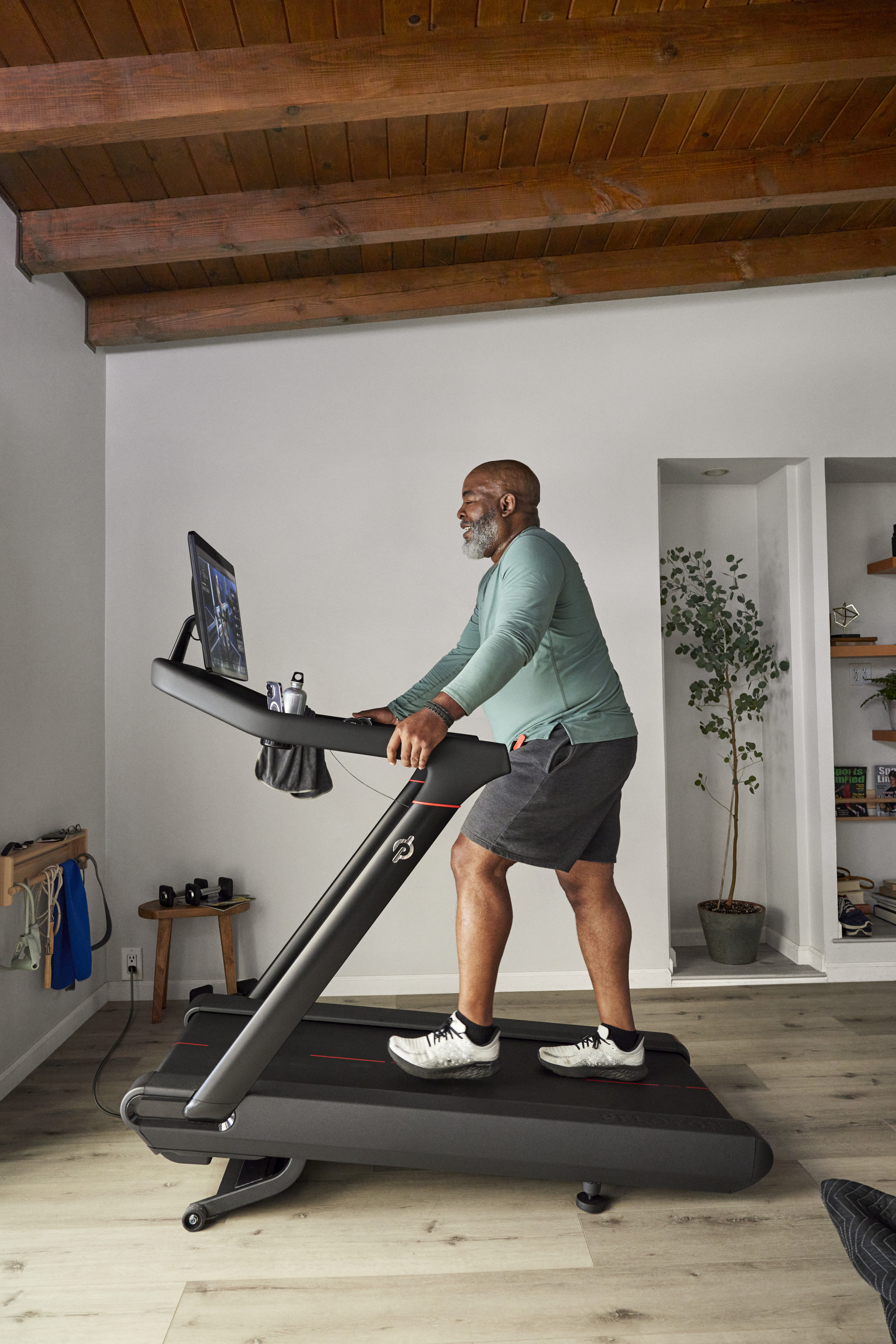
Is There a "Best" Surface to Run On? We Asked Peloton Instructor Robin Arzón
She breaks down all the pros and cons.
By Kells McPhillips•
What You Need to Know About Running On Different Surfaces
How Different Surfaces Can Impact Your Running
The Benefits of Switching Up Where You Run
How to Experiment with New Running Surfaces
So Is There Really a Best Surface to Run On?
Runners love logistics. Whether it’s debating the best time to run (Morning? Noon? Night?) or talking about layering strategies for different weather conditions, we’ll hold our post-run coffees and offer our opinions for hours. But one area of the sport that’s often overlooked is what is the best surface to run on, and according to experts, this little detail could make all the difference in your workout.
Road, trail, gravel, track, treadmill, grass, or sand—the surface you’re running on determines the difficulty of your run. Below, VP of Fitness Programming and Head Peloton Instructor instructor Robin Arzón breaks down why what’s beneath your feet matters and how to use different terrain to get stronger and more confident in your sport.
What You Need to Know About Running On Different Surfaces
The running surface determines your energy return or the amount of energy you’re getting back with each footstep. Generally speaking, soft surfaces (like dirt) absorb more energy than hard surfaces (like roads), which is why running in your neighborhood may feel easier than logging your miles on the beach. “Softer surfaces are gentler on your joints, but they generally require more work,” says Robin.
This phenomenon all comes down to a process called energy return. Think of a ball: If you bounce that ball on the sidewalk, it will likely return right back to your hand. However, if you bounce that ball with the same force on dirt, it may not quite reach your fist. The same concept applies when you’re out for a jog. (Your foot being the metaphorical ball here.)
The type of footwear you choose will also contribute to how much energy you receive from the ground. For example, carbon-plated shoes have been shown to put a spring in your step that may amount to more energy return step-by-step, although more research is needed. Spikes are yet another example. Track athletes wear spikes to improve their grip on the track, allowing them to take more energy from the rubber as they complete lap after lap.

How Different Surfaces Can Impact Your Running
There are so many places to run. And each type of running surface can affect your running and body in different ways. Here, Robin offers her insight on seven of the most common terrains out there so you can start exploring beyond your neighborhood loop or treadmill.
Road and Sidewalk
Pros
Ah, road running. This old standby has a lot to offer. First and foremost is access: No matter where you live, you are likely to have a long and winding stretch of pavement that’s just waiting to take you the distance. Roads also offer safety: As you go along, you’ll probably be surrounded by other people who can offer a sense of safety and security that you may not feel on, say, a trail. Pavement also offers incredible energy return, so you’ll feel supported as you go along.
Cons
That said, there are a few safety concerns to keep in mind when you’re stepping out your front door for a quick jog. Cars kill about 8,000 pedestrians per year, so being aware of your surroundings is critical (especially if your neighborhood doesn’t have sidewalks). If you’re running in the early morning or at night, it’s important to wear fluorescent clothing or a headlamp. You should also run against traffic so cars can spot you coming toward them.
Trail
Pros
According to Robin, trail running is a low-impact alternative to running on the road. Dirt is less hard on your muscles and joints, but it offers other types of challenges. “If it's a dirt trail with an even ground, like on a path, there's a reduced chance of injury,” she says. “Some trails are super mountainous and keep the path really interesting.” Technical paths help you hone your footwork and agility. Plus, trail runs often include plenty of elevation, which will challenge your cardiovascular system and make those baby hills on the treadmill or road feel like a cakewalk.
Cons
On the other hand, trail runs present safety risks that you wouldn’t encounter in your neighborhood. Rain-slicked leaves and hidden rocks can lead to a rolled ankle or other injuries —if you’re not careful. “You have to watch out for tree roots and other hazards. And for sure, with trail running, you want to stick to marked trails,” says Robin. Going off-trail could lead you to get lost or encounter wildlife like snakes or bears. That’s why Robin recommends choosing well-cared-for trails that feature gravel, dirt, or woodchips.
Gravel
Pros
If you’re looking for a challenge, running on gravel can’t be beat. Because the rocks slip and slide beneath your feet, this surface will challenge your stability and your agility. This type of trail also leaves your brain guessing and reacting, which may stimulate your neuromuscular system and lead to better fitness over time.
Cons
Of course, gravel also presents a higher chance of injury. As you stamp your foot down, the gravel will move beneath your feet. If you don’t react in time, you may fall and/or hurt yourself.
Treadmill
Pros
Robin is a big fan of treadmill running. “There are so many variables that you can control [on the treadmill]—from the distance to the incline. And it’s always an all-weather run,” she says. “You can see calories and data points that might help you stay motivated and the surface is always smooth, well-maintained, and shock-absorbent.” The Peloton Tread and Peloton Tread+ has the additional benefit of built-in classes and community to help you stay motivated and joyful during your workouts.

Peloton Tread+
The ultimate treadmill experience.
Cons
“The thing that you want to watch out for with a treadmill is that you aren't overstriding. You need to really maintain proper alignment in your gait,” says Robin. Make sure that your feet are landing directly beneath your knees with each stride and that your arms are swinging from front to back (not side to side). Tilt your chest slightly forward. There you have it, amazing form.
Grass
Pros
“Grass is also a great place to run because it’s softer on your joints,” says Robin. Because grass is so squishy, it will take extra work on your part to launch from one step to the next, which offers a great challenge for your agility and cardiovascular system. Robin recommends looking out for well-tended grass like a football field or a golf course.
Cons
Just like trails, grass can be slippery and hazardous. Look out for potholes, sharp objects, or anything else that may cause a wipeout.
Sand
Pros
There are few things better in life than a long run on the beach, but this workout is not for the faint of heart. Although the view may make you want to relax (ah, the ocean breeze, the smell of salt water), the sand will quickly make you pay for such a perfect setting. “Running on sand barefoot helps work out the different muscles of your feet, especially for those of us who spend a lot of time in cushioned running shoes,” Robin explains. “Sand is also really good for strengthening your leg muscles and caloric burn.”
Cons
While you’re running on the beach, be mindful of sharp objects (like broken glass) and rocks. You may also need to contend with uneven surfaces as the sand slopes toward the ocean, so consider making your run an out and back to even out the effort put forth by your right and left sides.
Track
Pros
“I love the track,” says Robin. “It’s great for measuring distance, and on a well-maintained track, you know you're going to control for all the variables. This makes track great for speed work. Many cities have public indoor tracks where you can stay out of the rain or snow, but still squeeze in a great Fartlek or interval workout.
Cons
Of course, running in an oval for too long can make anyone, well, hate running. Public tracks can also be hard to come by, so you may have to pay a small fee or join a gym to gain access to this particular running terrain.
The Benefits of Switching Up Where You Run
Running on different surfaces helps you increase your agility, stability, and endurance. “You're going to be challenging your body with different variables like weather, resistance, or incline,” says Robin. Over time, switching up your running venue can make you a more versatile athlete who’s less prone to injury… which is kind of what we all want, right?
Trying out other terrain will also give you the flexibility to take your running routine farther than you may have ever imagined. For example, maybe a trail run or two convinces you that you’d like to run an all-dirt marathon, or an incredible run on the beach convinces you to sign up for a sandy 5K.
How to Experiment with New Running Surfaces
“My best advice for people who want to try a new running surface is to start small and buy the right shoes,” says Robin. “A general running shoe is adaptable in most environments, but you do want to be mindful of the terrain that you're going to be running on.” For example, you may want to invest in a trail shoe or a track spike if you’re committed to adding these surfaces to a weekly rotation.
Next, make sure not to overdo your mileage on the new terrain. “Be mindful of not ramping up too quickly,” says Robin. “The body is incredibly adaptable, and it likes variety. So I would say, start with the one that you have access to and you're willing to consistently do and then get curious when you're traveling or just visiting another part of town.” If you want to ease into beach running, for instance, shoot for just a half mile before advancing to a mile then two and so on. Be easy on yourself. And, most importantly, have fun.
So Is There Really a Best Surface to Run On?
Spoiler alert: No running terrain reigns supreme. Every surface offers a different array of benefits depending on the weather, goals of your workout, and where you feel like running that day. In short: The best place to log your miles is wherever will make you feel the most alive.

Peloton Tread+
The ultimate treadmill experience.
This content is for informational and educational purposes only and does not constitute individualized advice. It is not intended to replace professional medical evaluation, diagnosis, or treatment. Seek the advice of your physician for questions you may have regarding your health or a medical condition. If you are having a medical emergency, call your physician or 911 immediately.
Level up your inbox.
Subscribe for a weekly dose of fitness, plus the latest promos, launches, and events.
By providing your email address, you agree to receive marketing communications from Peloton.
For more about how we use your information, see our Privacy Policy.





